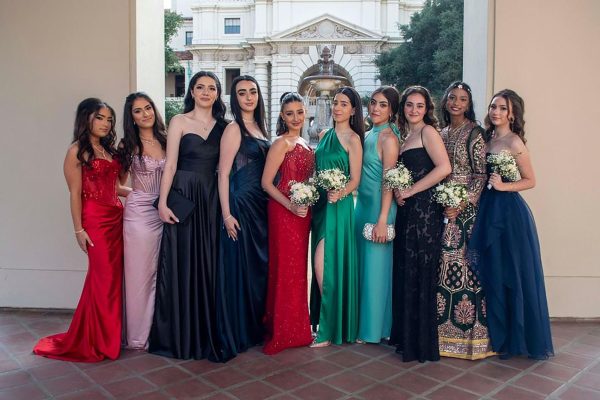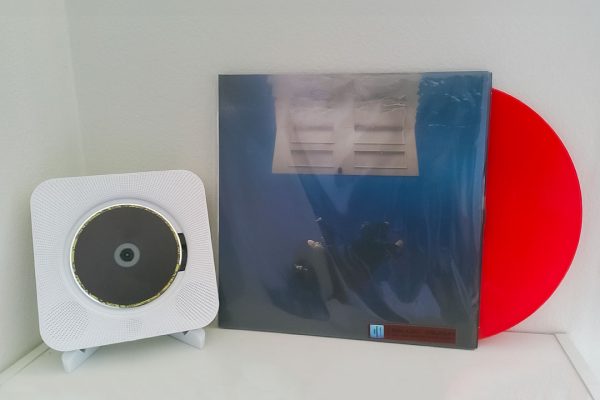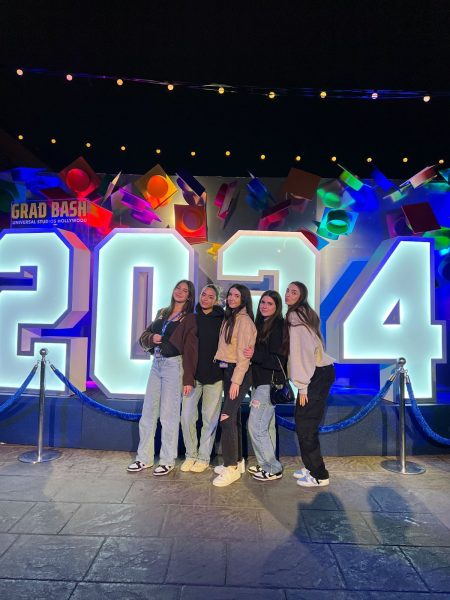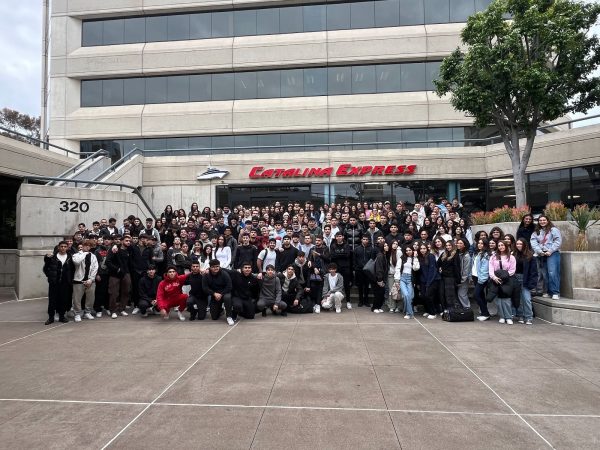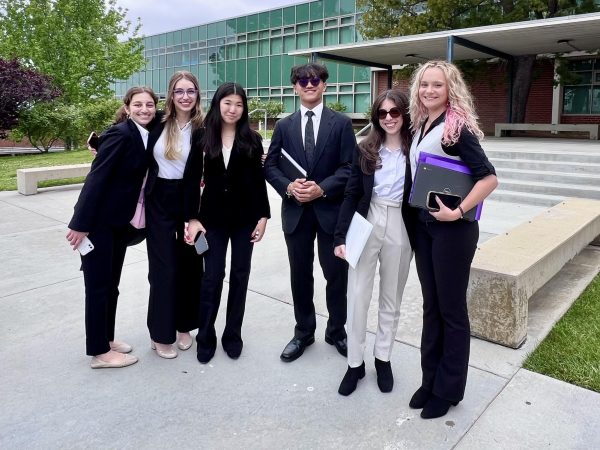GUSD gives students the opportunity to talk with Holocaust Survivors
Mrs. Fang’s 4th period class about to start their Holocaust survivor meeting.
The week of January 23rd, GUSD set up multiple zoom meetings each with a unique speaker that would share their personal story as a Holocaust survivor. These speakers presented at GUSD elementary, middle, and high schools. Many Clark Magnet teachers including Ms. Fang, Mrs. Tatevosian, Mr. Davarhanian and Mrs. Kirakosyan eagerly waited to share this experience with their students. January 27th marks the National remembrance day of the Holocaust.
Mrs. Fang’s 4th period History class had the opportunity to listen to Lea Radziner, a survivor who lived through the Holocaust in Amsterdam. Arin Tahmasian said “I found her perspective really interesting because it was different. She didn’t get sent to a camp unlike a lot of other survivors”. Radziner was sent by the Dutch Underground and hid away in a Christian family home. She was only 5 years old when she endured the Holocaust. Radziner was one of the eight speakers who each spoke to a different class. Mrs. Fang’s 4th period class was touched by Lea Radziners story, “These are the last few people that can share their stories,” said Mrs. Fang. “This class might be the last generation to listen to these survivors.”
Mrs. Kirakosyans 5th period English class talked to David Lenga who lived through the Holocaust in Poland. Lenga took hope in the small chances, “It was really inspiring because he almost died quite a few times. He was very daring and did everything he could to get away” said Adelina Ayvazyan. Lenga was only 11 years old when he was put on a train and sent to a camp. Students in Mrs. Kirakosyans class were studying cultural identity, “I thought it would be a great opportunity to show them real life cultural identities” says Kirakosyan.
This event was extremely important and beneficial to all GUSD students who took part in it. Almost all students will probably remember this experience. 10 years down the line students probably won’t have the opportunity to meet with Holocaust Survivors. It’s up to the new generation to keep the survivors’ stories alive.
On January 27, 2023, the US recognized the Holocaust and remembered the dark and daunting ways it worked. Invasians, Internment camps, bombing, unethical experiments, and so much more. Mrs. Fang was able to invite her class into a Zoom that talked with real Holocaust survivors. There were 8 different holocaust survivors that were able to speak to our class. Joseph Alexander, Lea Radziner, Lya Frank, Harry Davids, Dana Schwartz, David Lenga, Herb Murez, Phil Raucher. I had the pleasure of meeting Lea Radziner. Radziner was born on November 10th, 1938 just a day after Kristallnacht: the night of broken glass — When Nazis broke windows and vandalized thousands of Jewish owned businesses and homes.
From the minute Radziner was born she had to face the harsh reality of the dawning holocaust. Radziners’ father was one of the first 400 men in Amsterdam 1941, to be killed by Nazis. When Radziners mother realized they were at risk of being captured, she rushed into action. She sent Radziners younger sister, Esther, to a Christian family to work as a house maid. Radziner talked about how hard it was to leave their city, Amsterdam: “They lifted the bridges all around Amsterdam so nobody could leave,” said Lea. At just four years old, Radziner’s mother sent her to the Dutch Underground. The underground took in young Jewish children that would go live with Christian families. “The Underground would send you to the North or South of Holland depending on what your haircolor was,” stated Radziner. People in the North had light hair and people in the South had dark hair. Dark haired children were classified as “coffee” shipments, while blond haired children were “tea” shipments.
Radziner was sent to a Christian family in Horst, Limburg. Her host parents, whom she called tante, had to buy clothes from the black market. “If people in the town noticed you started to buy childrens clothes, they would have suspected a Jewish child was taken in,” said Radziner. Raziner also talked about how she had to hide from an inspection. “Somebody in our town told the Nazis that there might be a Jew at my Tantes house,” she said. At only 5 years old Radziner had to silently hide in a cabinet. “I could hear my Tante screaming and arguing with the Nazis, and the Nazis threatened to put my Tantes in jail and take me away if I was found,” said Radziner. For an hour and a half five year old Radziner had to sit silently in a cabinet while Nazis searched her house. “My Tantes said I couldn’t cry, I couldn’t talk, and I couldn’t move.”
Radziner was never found and was able to successfully survive the Holocaust. She later met up with her Mother and younger sister Esther after the Holocaust. All of Radziner’s furniture was taken by their neighbors. Radziner’s mother said she had to get the police involved to get her furniture back. When she first met back with her family ,she didn’t recognize her mom. She also didn’t want to leave her Tantes, and battled chronic anxiety when separated. “I was throwing up every day, I never talked and my mother was worried,” said Radziner. Radziner’s mother eventually decided to give her back to her Tantes, “Even though I was happy to be back [with my Tantes], I knew I had a real family and I knew I had to go back,” said Radziner. Eventually, she moved in permanently with her mother and sister — this time with a stress free stride.
Mrs. Fang’s 4th period class was touched by Lea Radziners story, “These are the last few people that can share their stories,” said Mrs. Fang. “This class might be the last generation to listen to these survivors.”

Interests/hobbies? Water polo.
Dream Destination? Ireland
In 20 years... I hope to be serving in Coastguard as a helicopter pilot.
Favorite Fictional...





